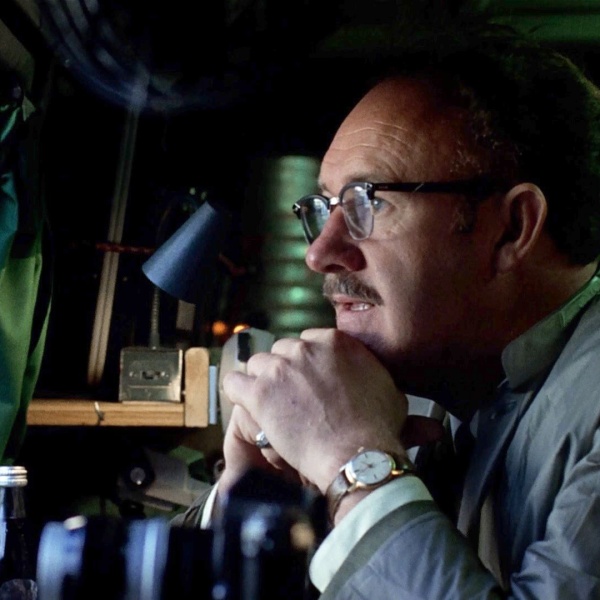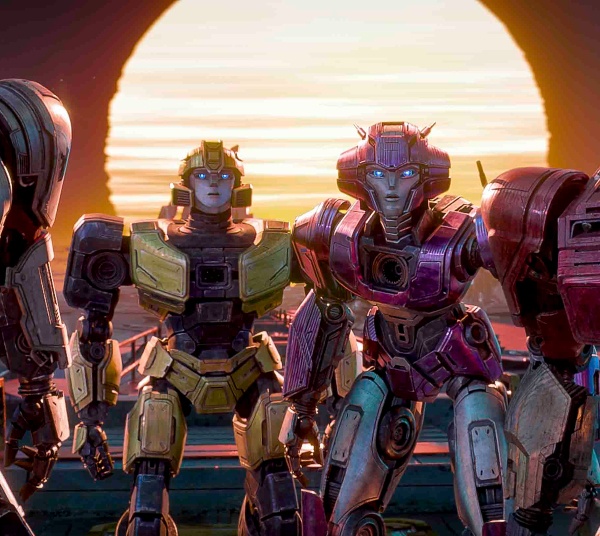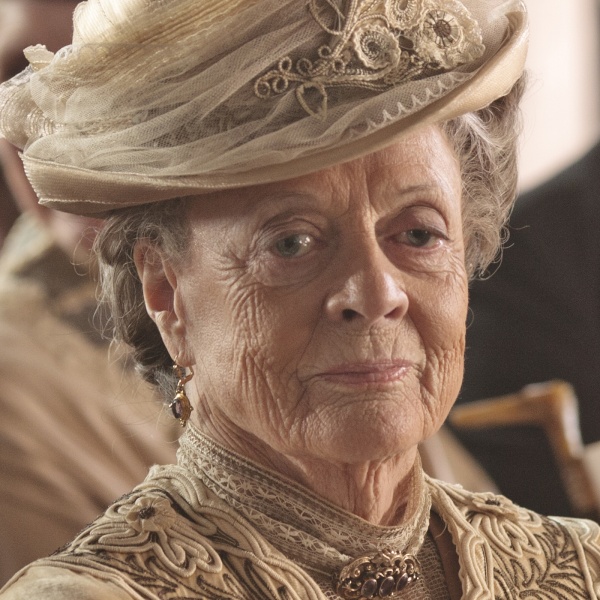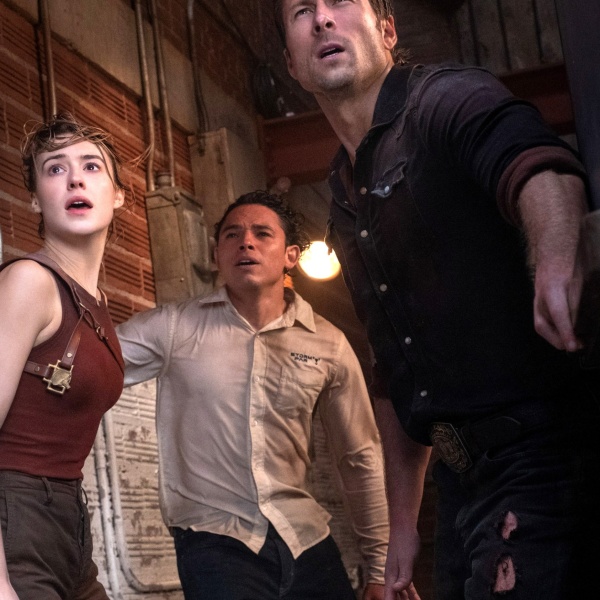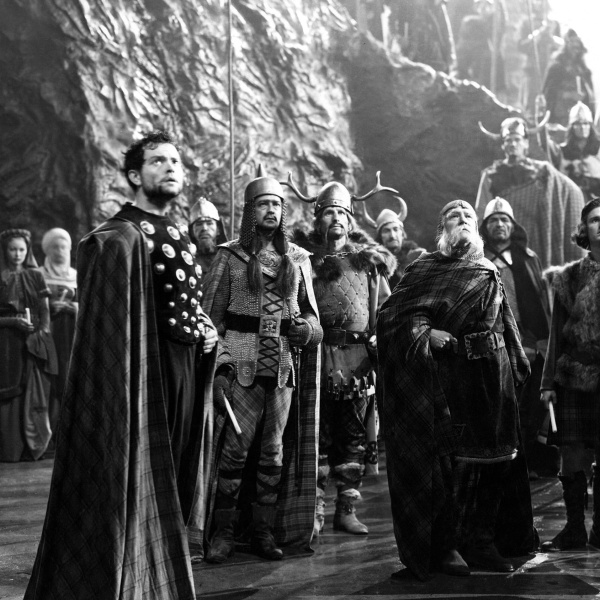
The idea of reviving the “Scream” franchise seems like a good one, at least on paper. When the original film was released in 1996, it was unlike anything that had come before it – a horror movie where the characters were well versed enough in the conventions of the genre to try and escape alive. Years before Comic-Con hijacked the multiplexes, “Scream” was a movie where basement-dwelling geekiness wasn’t just a character trait, it was essential to your survival. The subsequent films, the underrated “Scream 2,” which had the characters riffing on sequels, and the disappointing “Scream 3,” in which the scales were erroneously tipped too much in the favor of arch hipness (and away from any actual scares), expanded the mythology of the original while somehow muddying the pure pleasures that the first film offered up.
Eleven years after “Scream 3,” though, and a lot of things have changed about the horror genre – gone are the kind of self-aware slice-em-ups that followed in the wake of “Scream,” replaced by years of Japanese remake spookiness and, more recently, grimy torture porn groan-a-thons. The time seems about right to have the original “Scream” team (including Wes Craven, cast members Neve Campbell, David Arquette and Courteney Cox, and, to a lesser degree, screenwriter Kevin Williamson — who was replaced mid-shoot by Ehren Kruger) return and carve up the current state of genre movies. Except that something is missing that among the fountains of gore and wise-aleck asides, keeps it from being the cutting send-up it so desperately wants to be.

As per the other films, “Scream 4” opens with a tasty prologue, which doesn’t quite live up to the first one’s Janet-Leigh-in-the-shower teaser that saw Drew Barrymore dead and hanging from a tree before the title card popped up on screen, but is considerably more clever than expected, given how long in the tooth the franchise is. It would be criminal to give anything away, and while it skimps on the high star power, it more than makes up for it in its winking gonzo outrageousness, complete with a Russian nesting doll trick of self-reflexivity that has more layers of reality than “Inception.”
Then, after this fun but prolonged series of cold opens, Craven finally shifts the story into gear. The franchise’s heroine, Sidney Prescott (Campbell), returns to her hometown of Woodsboro on the last step of her book tour, symbolically marking her transition from a victim to a survivor. Settling in with Aunt Kay (Mary McDonnell) and her cousin Jill (Emma Roberts), Sidney initially finds comfort in Woodsboro, especially when catching up with old friends like Sheriff Dewey (Arquette) and his wife Gayle Weathers (Cox). Yet, with Sidney tempting fate by returning to the cursed town on the anniversary of the original killings that spawned sequels and meta-sequels, Woodsboro does not remain welcoming for long as the grisly murders start up again.
From the outset, though, something seems to be off – we’re not relieved to see these characters return because their interactions are so painfully awkward. Cox, in particular, whose lips have been surgically stretched and malformed in the years in between ‘Scream’ films, looks like she has no idea what she’s even doing in the movie (her character is searching for relevance, so is the actress), while Campbell, whose character has been repositioned as an everyday avenger, spends large chunks of the movie’s running time making tea and wearing yoga pants. Arquette just looks puffy and sweaty and generally confused, his aw-shucks dialogue stiffer and more forced than in previous installments.
As for the plot of “Scream 4,” it follows pretty closely along the lines of its predecessors – lots of people getting hacked up while the characters try to figure out whodunit, and why. The deaths this time around are fairly imaginative and sometimes shockingly extreme; there’s a great moment where Campbell’s literary agent (Alison Brie) is stalked in a parking garage that gooses with a bristling intensity. But more often than not, sequences are set up that aren’t fully paid off – one tantalizing moment has the kids taking part in Stab-a-thon, where they watch a marathon of the movies that were based on the events of the first “Scream.” The Stab-a-thon is set in an old barn, with great set decorations, but the set piece doesn’t crescendo in the appropriate ways, even with a nifty gag with a series of hidden cameras, instead limping towards a conclusion and an even more lackluster follow-up sequence. This is a shame, especially given the robust direction of Craven and the fluid camerawork by Peter Deming; it’s nice to see a horror movie with some visual texture. 
More problematic is the movie’s thematic core. With each ‘Scream’ they’ve taken on a different topic – from horror movies to horror sequels to Hollywood in general (the third one’s broad net is one of the reasons it is so mushy and ineffective). At some point, around the midway mark, the idea is presented that the events of “Scream 4” are actually a “remake” of the original killings, which is sort of clever and fun but is never really developed properly. For instance, who are the surrogates for the original characters supposed to be if some of those characters are still alive? We’re introduced to several police officer characters (including an underused Marley Shelton and Adam Brody) but which one is tasked with standing in for Arquette? It’s never quite clear, especially since “Scream 4” is, you know, a sequel. Additionally, a tantalizing plot thread about the killer(s) making a movie out of the murders never produces more than a narrative nibble.
Moreover, by infusing comedy directly into the scenes of horror, we are never allowed to feel anything. While the first film wore its knowledge of genre on its sleeve, this reboot/remake takes that knowledge and snarkily critiques it: it deconstructs the deconstruction. This approach, as one character in the film notes, taking one generation’s tragedy and turning it into another generation’s comedy, is a tricky proposition that ultimately kills the film when the comedy bleeds into the horror segments. For a horror film, the audience is never allowed to be genuinely scared because being genuine and being self-reflexive are not exactly compatible filmmaking methodologies.
But the biggest problem with “Scream 4” is that it’s partially a send-up in search of a target, and never quite finds one. Clocking in at nearly 110 minutes, the film feels overlong and yet it rushes through or botches all the variables that matter. Those familiar with the original trilogy never get enough time with Sidney, Dewey, and Gail to make the exercise feel worthwhile while the newbies are not given enough screen time for characterization (a point the film acknowledges in one of its jokes, but acknowledgment is not the same as rectification), making them the equivalent to cuts at a butcher counter before they even meet Ghostface. While a few new cast members stand out (particularly Hayden Panettiere, showing more personality than she ever did on “Heroes“), these are fleeting, diversionary highs that do little to mask the movie’s inherent hollowness. “Scream 4” is a lot like a 10-year high school reunion. There’s a mixture of dread and giddy anticipation as it approaches but, in the end, the brief time spent there is underwhelming. [C] —additional commentary by Drew Morton
